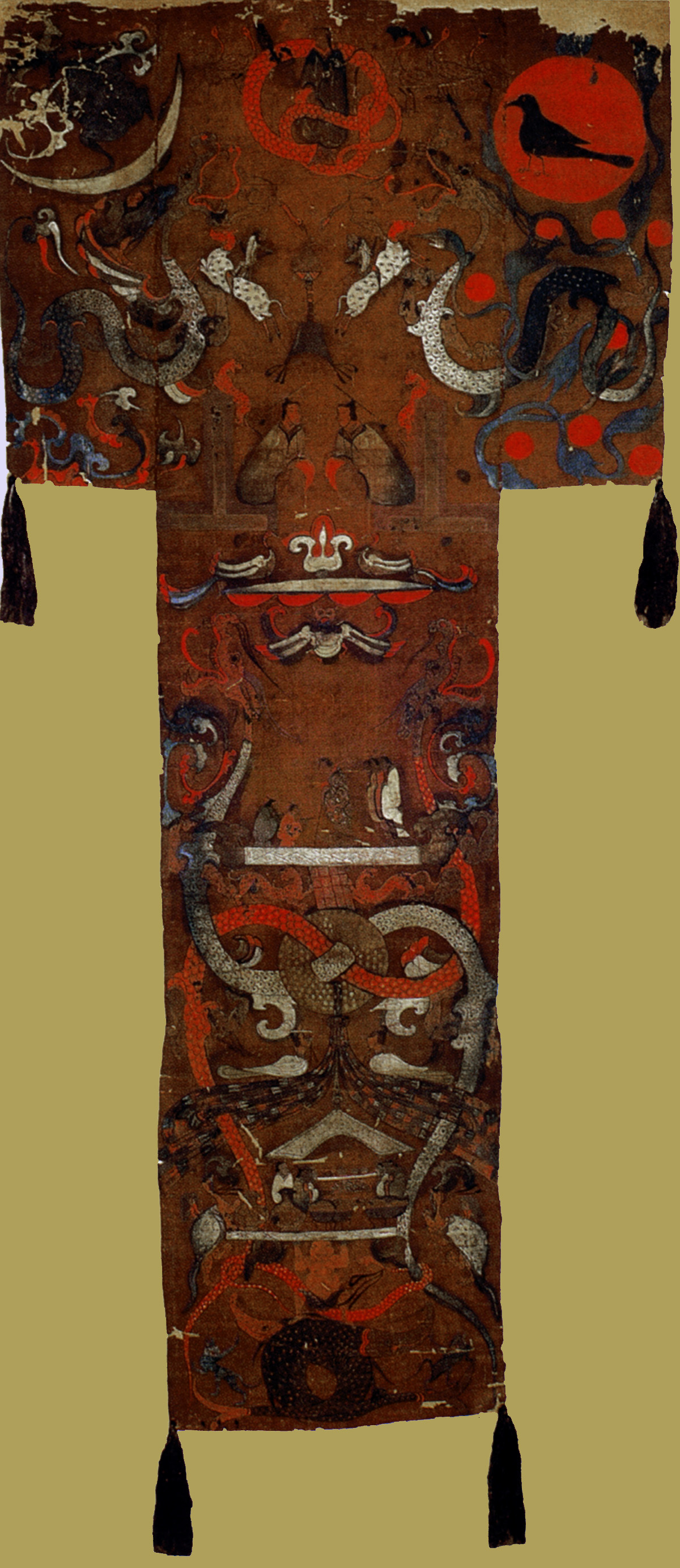
Funeral Banner of Lady Dai
Western Han dynasty, 168 B.C.
Hunan Provincial Museum, Changsha

|
Funeral Banner of Lady DaiWestern Han dynasty, 168 B.C.
|
Lady Dai's painted silk banner is a precious window into Han-dynasty legends and funeral practice; it was carried in front of the funeral procession, then draped upon her coffin. Banners like this were employed to attract the spirit of the deceased to its tomb, where it could be properly started on its afterlife journey instead of remaining on earth to bother the living.
The banner's design1 is divided vertically into Yin (left), Mixture (center), and Yang (right); and horizontally into the three realms of Heaven, Earth, and the Underworld. The banner describes Lady Dai's journey to heaven; it is decorated with grave goods, spirits, legends, and symbols of immortality associated with Xiwangmu, the Queen Mother of the West.
Heaven
Earth: Farewell scene
Earth: Boundary between life and afterlife
Earth: Lady Dai's funeral feast
Underworld6
To summarize, Lady Dai's banner situates her journey to heaven in a rich context of funeral objects, customs, and legends. Its dynamic sense of left-right symmetry, and especially the paired dragon bodies that cross through the center of the bi, expresses the richness of yin/yang duality in early Chinese thought.
1A 3x3 ("Tic-Tac-Toe") organization of visual space that is found, as well, in other ancient cultures. The actual contents of the space are, of course, culture-dependent.
2Often, although not here, the dragon is a prototypical yin animal and symbol of the emperor. On this banner, though, it operates as a powerful creature and conduit of Daoist energy.
3Snake or dragon tails symbolize an Immortal.
4These are guardian animals; probably leopards, possibly tianlu, although the latter are usually described as winged lions. The felines who guard the tomb are horizontal, while the felines who guard the Heavenly Gates are vertical - a deft artistic touch.
5
Such precious objects as bi, bells, jade, chimes, etc. are found in quantity in early
Chinese burials.
6In China, the underworld has three connotations. The first is cosmological, as the foundation of all that exists. The second is the world of the deceased in their tombs, where they can enjoy feasting and entertainment in the afterlife. The third, which of course does not apply to Lady Dai, is the Hell Realm with its fierce gods and punishments.
7The perching bird is a motif
from the natural world that is also found on many
bronzes.

|

|

|